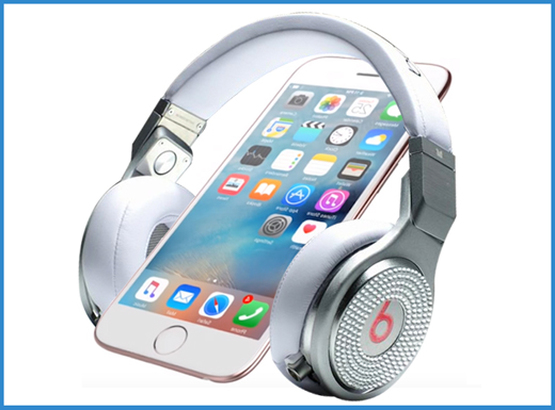After Apple holds its much anticipated Special Events, the buzz is usually about new features added to its popular products. The most recent revelation, however, was most notable for what the world’s most profitable company will remove from its iconic iPhone.
Apple’s newest smartphone, the iPhone 7, will no longer feature the audio output that consumers have come to expect in all manner of technology for more than a century: a headphone jack. Apple’s rationale for the removal is multifold: eliminating the output will allow the phone to feature a second speaker, improving sound quality; without the jack, the phone can become a little thinner; and most significantly, there are more advanced ways to listen to personal audio.
Even for people who pride themselves in embracing the newest tech, saying goodbye to something as time-honored as wired headphones isn’t easy. Consequently, consumer reactions to Apple’s announcement have been mixed. While some have supported the change, many others have called it a big mistake, and still others see it as a thinly-veiled ploy for profit.
The pro-jack people, over 300,000 of whom have signed a petition to keep the analog output, offer several compelling arguments why the headphone hole should stay, for instance: compatibility with other products, the reliability of a wired connection, and less restrictive digital rights management (DRM).
Then there’s the suggestion that Apple’s cord-cutting is aimed at selling more expensive wireless headphones. Apple’s own line of wireless headphones, called “AirPods,” will retail for $159, but there's more to the story. In 2014, Apple bought Beats, a market leader in headphones. Beat’s wireless earbuds start at $200, while its wireless headphones start at $300. Sales of millions of jack-less iPhone 7s, therefore, also potentially mean purchases of millions of pairs of expensive Apple or Beats wireless headsets.
So, two questions remain: By removing the headphone jack from the iPhone 7, has Apple make a major marketing misstep, or has it found a sly way to compel customers to prematurely go wireless, for the benefit of its own bottom line. The answer to both of these questions is “No.”
Virtually any technology, no matter how good it is or how long it’s been used, will one day be replaced by something that’s more effective and/or efficient. That’s the nature of innovation. Apple has helped consumers get out of the old and into the new several times before, e.g., “Apple eliminated CD and DVD drives from computers, cutting unnecessary weight as the world was moving to streaming media.” Such changes are often hard to swallow at first, but once we make the change and adapt our behavior, we rarely look back. In fact, we wonder how we ever managed without the improvement.
In terms of the headphone jack, its removal is another step in the right direction, away from analog and toward digital technology. Yes, wireless headphones tend to be high-priced, and sometimes have “spotty quality,” but like any new technology, those deficiencies will disappear over time. And, if iPhone 7 consumers eschew wireless headphones, they can still have a hardwired, digital headset connection through their phone’s lightning port.
Still, isn’t Apple pushing people too far too fast, forcing them to adapt to new technology that they don’t really need? First of all, no one has to buy an iPhone 7, or any other iPhone for that matter. People purchase them of their own accord, in favor of many other smartphone alternatives. What’s more, no one who buys an iPhone 7 and wants to use headphones has to have wireless ones. The new phone will come with a 3.5 mm headphone jack adapter, which will allow users to plug almost any wired headphone into the phone’s lightning port.
Some may decry the waste of wired headphones that people will abandon in favor of new wireless ones. Unfortunately that kind of product obsolescence happens almost every time there’s a major technological advance, e.g., more streaming of video has meant more unused DVD players and DVDs. Ultimately, though, the production of fewer headphone cords should represent a net savings of resources.
Change is good, but it also can be hard to handle at first. By eliminating the old analog headphone jack on the iPhone 7, Apple is again encouraging consumers to adapt to new technology that represents the future of audio. Purchasers are free to opt in or out of the wireless experience with no real fallout. Either way, Apple’s jack-less approach represents “Mindful Marketing.”
Learn more about the Mindful Matrix and Mindful Meter.
Check out Mindful Marketing Ads and Vote your Mind!




 RSS Feed
RSS Feed